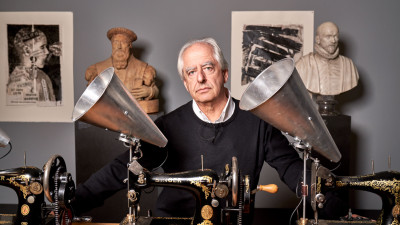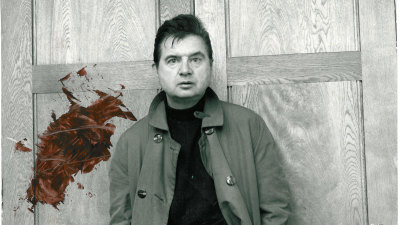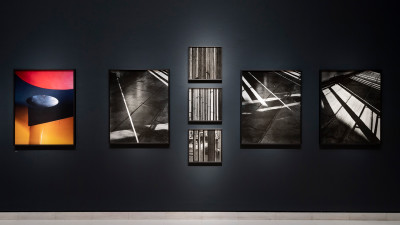How to read an Anselm Kiefer
How to read an Anselm Kiefer
By Sam Phillips
Published 19 November 2014
Rich in both material and meaning, the powerful paintings of the German artist reward repeated viewing. We take a deeper look at ‘Black Flakes’, one of the works in the show.
-
Reading
How do you read a painting? And is ‘read’ even the right word for an encounter with art? For Anselm Kiefer it’s appropriate: his intense interest in the written word has led him to inscribe text on his canvases and – in the case of Black Flakes – set a book, forged from lead, in the centre of a winter landscape.
Books in Kiefer’s work represent personal and collective memory. Black Flakes draws inspiration from a poem of the same name by Paul Celan, a German-speaking Romanian Jew who survived the concentration camps. His parents did not survive: Celan’s father died of typhus and his mother was shot when exhausted and deemed unfit for work. One section of Celan’s poem reads: “Autumn bled all away, Mother, snow burned me through:/ I sought out my heart so it might weep, I found – oh the summer’s/breath,/it was like you.” Words from the poem, written by Kiefer in charcoal, recede into the painting’s high horizon line. Other works in the RA exhibition respond to Celan’s poetry about the Holocaust, in particular the poem Death Fugue (1948) in his seminal pair of paintings Margarethe (1981) and Sulamith (1983).
-

Anselm Kiefer, Black Flakes, 2006.
Privatbesitz Familie Grothe. Photo Privatbesitz Famille Grothe. © Anselm Kiefer.
-
Snow
Snow and ice are symbolic in Celan’s poetry of both loss and silence in the face of the Holocaust. This symbolism carries over to Kiefer’s canvas, and – in the form of a painting – it gains extra art-historical association. The winter landscape is a staple in 19th-century German Romantic art, a fine example being Caspar David Friedrich’s Winter Landscape (c.1811) in the National Gallery. In Friedrich’s work the winter landscape of Germany is sublime and spiritual; in Kiefer’s it is testament to the country’s dark history.
The white in Black Flakes is tinged with bloody pink and orange paint. This echoes early watercolours by Kiefer, such as Winter Landscape (1970), also on view in the RA exhibition, in which blood spills on the surface of snow from a human head.
-

Anselm Kiefer, Winter Landscape, 1970.
© 2014. Image copyright The Metropolitan Museum of Art/Art Resource/Scala, Florence / © Anselm Kiefer.
-
Trees
Black Flakes is a mixed-media painting, with lead, wood and plaster sharing space with oil, emulsion, acrylic and charcoal. In reproduction the work looks fairly flat, but in reality the stubble of stumps in lines across the landscape are thick branches of wood that protrude like sculptures from the painting’s surface.
Critics have seen these branches as representing the barbed wire of the concentration camps. But trees have a wide range of references for Kiefer: for example, he remembers how his family took refuge from Allied bombing in the forest, and his work has often focused on myths associated with trees and wood, such as that of Yggdrasil, the Norse ‘World Tree’ that shelters the universe.
-
Lead
Kiefer loves lead for its weight: he has said it is “the only material heavy enough to carry the weight of human history”. But it appears malleable in his work, changing colour and shape, representing in Black Flakes an object as a light as a book. “It is in flux,” in the artists words. “It’s changeable and has the potential to achieve a higher state than gold.”
This reference to alchemy – another key interest for artist – is particularly apt for Black Flakes. Kiefer believes that art is a type of alchemy: it can transform our understanding of the past, and redeem us in the present.
Anselm Kiefer is in the Main Galleries at the RA until 14 December 2014.
Sam Phillips (@SamP_London) is Editor of RA Magazine.





